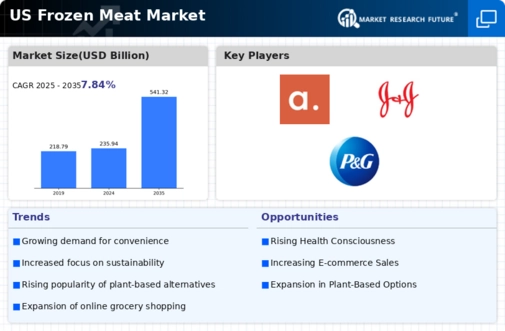US Frozen Meat Market Summary
The US Frozen Meat market is poised for substantial growth, with a projected valuation increase from 235.94 USD Billion in 2024 to 541.32 USD Billion by 2035.
Key Market Trends & Highlights
US Frozen Meat Key Trends and Highlights
- The US Frozen Meat market is valued at 235.94 USD Billion in 2024 and is expected to reach 541.32 USD Billion by 2035.
- The market is anticipated to grow at a compound annual growth rate (CAGR) of 7.84% from 2025 to 2035.
- Increasing consumer demand for convenient meal options is driving the growth of the US Frozen Meat market.
- Growing adoption of frozen meat products due to changing dietary preferences is a major market driver.
Market Size & Forecast
| 2024 Market Size | 235.94 (USD Billion) |
| 2035 Market Size | 541.32 (USD Billion) |
| CAGR (2025 - 2035) | 7.84% |
Major Players
Apple Inc (US), Microsoft Corp (US), Amazon.com Inc (US), Alphabet Inc (US), Berkshire Hathaway Inc (US), Meta Platforms Inc (US), Tesla Inc (US), Johnson & Johnson (US), Visa Inc (US), Procter & Gamble Co (US)













